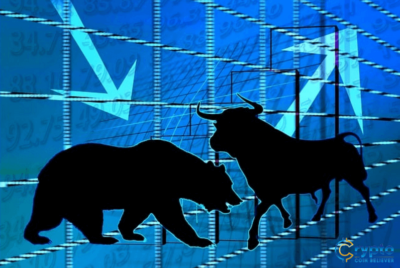The financial market is a dynamic environment that goes through ups and downs in cycles. The…
Crypto Fear & Greed Index 101

Crypto greed index and crypto fear index are measurements used to monitor the market.
Have you ever encountered the term bullish or bearish market conditions? These refer to market conditions. In turn, these circumstances affect how investors behave.
Emotions directly affect a market. When investors panic to buy or sell their crypto assets, it causes the price to either plunge or skyrocket.
Let’s learn more about the Crypto Fear and Greed Index in this blog post.
What is Crypto Fear & Greed Index?
The Crypto Fear & Greed Index analyzes the behavior of investors in the cryptocurrency market.
CNN Business developed the Fear and Greed Index. It quantifies the market sentiment. A scale shows the two emotions, fear and greed. Then, it is measured from 0 to 100.
A low score represents a fearful market. On the contrary, a high score shows that market participants are confident about crypto market conditions.
The closer the score gets to 100, the more force that ‘greed’ or excitement expends on the market. It can either show extreme fear or extreme greed.
Breaking Down Fear & Greed

FEAR
When most of the investors feel fear, they are afraid of losing their capital. There is a higher chance that they will sell their assets because of their doubts about the market’s stability and valuation of their assets.
Two kinds of factors bring about fear. These are macroeconomic factors and asset-specific factors. Macroeconomic factors include economic crises, inflation, and recession.
On the other hand, asset-specific factors refer to the prices of oil or slumping gas prices. Moreover, bad media reputation on a certain cryptocurrency has a significant impact too.
GREED
When asset prices are increasing, investors have a tendency to hoard assets. They are after the possible profits that they can earn. Additionally, together with greed comes a new kind of fear. FOMO or Fear of Missing Out happens when market participants fret about not making the most out of promising earnings.
These two emotions affect the markets. It indicates the trading status of assets and markets, whether it is trading above its expected value because of greed or below that expected value because of fear.
Factors Affecting Crypto Greed & Fear
Volatility (25%)
Intense changes in prices signal volatility. This represents the anxiety level of investors.
When investors feel anxious, their risk appetite is significantly lower. The average volatility values of the last 30 and 90 days provide comparison for checking. The higher the volatility level, the higher the fear.
Market Momentum and Volume (25%)
Market momentum is a means of measuring general market sentiment in supporting buy and sell for and against market trends. It trends upwards or downwards.
To measure market momentum and volume, buy and sell volumes from the last 30 days and 90 days are compared. Huge buy and sell values show that a big number of investors participate in the market. Hence, there is high greed.
Social Media (15%)
There is a significant population in the Twitterverse that continuously monitors the crypto market and people can interact with it. Hashtags and tweets gauges the market sentiment.
There are other influencing elements such as how fast and frequent people interact with the posts over a specific length of time. If there is high speed and frequency for the retweets and interactions, it is another sign of greed.
Surveys (15%)
Surveys are a direct way of asking participants about their market sentiments. There are trusted third-party platforms that conduct surveys every week. The usual sample size is 2,000-3,000 people. Crypto traders and investors form the surveyed population.
However, surveys are now temporarily suspended on various websites.
Bitcoin Dominance (10%)
An increase in Bitcoin’s price or value signifies fear. You can check the bitcoin dominance in its share of the total crypto market capitalization. High Bitcoin dominance reflects an unpredictable market. This situation makes investors focus more on investing in Bitcoin as a hedge against falling prices.
But, when the market is greedier, the Bitcoin dominance decreases. This happens because investors want to make big profits with altcoins.
Conversely, high Bitcoin investments also represent a safe crypto market. The Crypto Greed & Fear Index only considers Bitcoin.
Google Trends
Google Trends analyzes Bitcoin-related keywords. Once people’s interest in Bitcoin increases, the search queries and prices follow suit. The young history of cryptocurrency showed that Google BTC queries have an impact on the wild volatility of crypto prices.
Final Word
Sentiment analysis is useful in investment decisions. Market volatility is not an enemy. Rather, it should serve as a guide on how market participants should act basing on the current market conditions.
There are days when buying opportunities are abundant. Additionally, there are down moments too. We have to be well-prepared for both. The Bitcoin Fear and Greed index tells us a lot about how investors strategize.
We just need to be very observant and quick to act so that we can minimize our losses but maximize our profits.




This Post Has 0 Comments